Voice search SEO revolutionizes the way customers find local businesses. Research shows that 71% of consumers would rather use voice search than type their queries. This technology has altered the map of local search behavior. Local queries make up 80% of all voice searches, making your business’s visibility dependent on this technology.
Voice search optimization is a vital part of your marketing strategy. Experts predict voice-based searches will account for more than 50% of all searches in the coming years. The numbers tell an interesting story – 70% of users connect with local services through their smartphones using voice search. Businesses that don’t adapt their voice search marketing strategies risk becoming invisible to potential customers who ask Siri, Alexa, or Google Assistant to find nearby solutions.
Here, you’ll learn about the differences between voice-driven and traditional text searches. We’ll explore what these changes mean to your local SEO strategy and share practical tips to keep your business visible in this evolving digital world.
How Voice Search Is Changing Local Search Behavior
Voice-enabled technology has changed the way users find local businesses. This isn’t just another trend—it represents a permanent change in how consumers behave, and it affects your business’s visibility.
Why Voice Search Is Growing Fast
People love voice search because it’s just easier to use. About 90% of users find it simpler than typing, and 89% say it’s more convenient. The numbers tell the story—58% of Americans have tried voice search at least once, and 21% keep using it every week.
Your potential customers use voice assistants everywhere now. They talk to their smartphones (56%), smart speakers (35%), and TVs (34%). The numbers will only go up—experts predict 75% of US households will own smart speakers by 2025. This shows a fundamental change in how people look for information.
Age groups use voice search differently. In the US, Millennials lead the pack with 61.9% using voice assistants monthly. Gen Z follows at 55.2%, and Gen X at 51.9%. People between 25-49 are the most active users—65% talk to their devices every day.
How Local Intent Drives Voice Queries
Local searches make up much of what people ask their devices. Studies show 80% of voice searches are local, and 46% specifically look for local information. These numbers are much higher than typed searches.
“Near me” searches show this change perfectly. These location-based questions have grown 500% faster than regular mobile searches. People who talk to their devices usually want quick answers to urgent needs, often while doing other things.
Voice search users behave differently from traditional searchers. They often multitask—driving, cooking, or walking—and want immediate answers. These users are ready to act quickly, often within an hour.
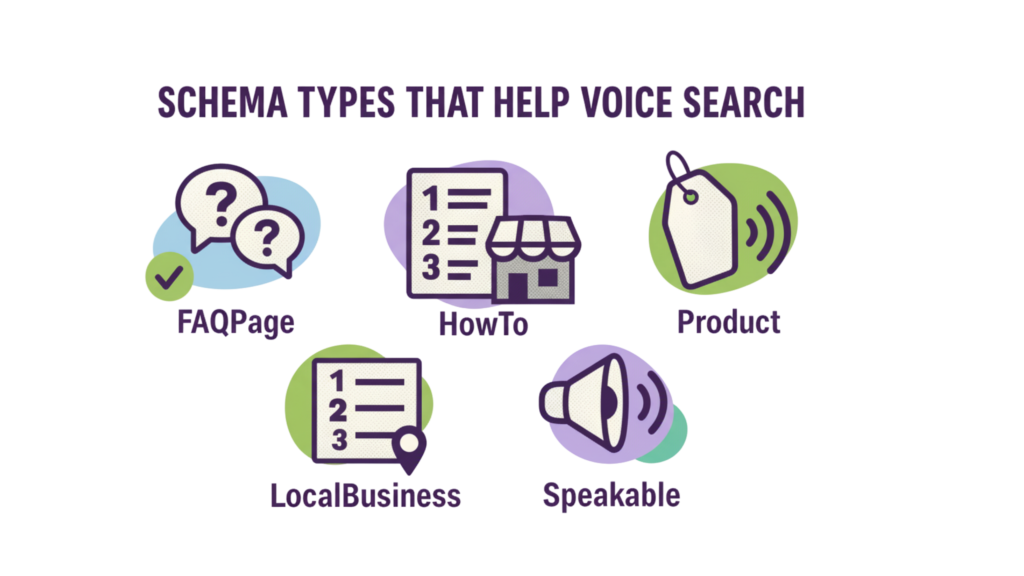
Examples Of Voice Search In Daily Life
Voice commands have become part of everyday life. Your customers use voice search in many ways:
- Looking for restaurants and food delivery (51% of voice searches are about restaurants—the most searched category)
- Finding nearby grocery stores and shops
- Checking business hours, like “What time does the hardware store close?”
- Looking for specific service providers (“Find a licensed plumber near me available tonight”)
The data shows 28% of consumers call businesses right after a voice search. This makes voice search users valuable leads because they’re ready to take action.
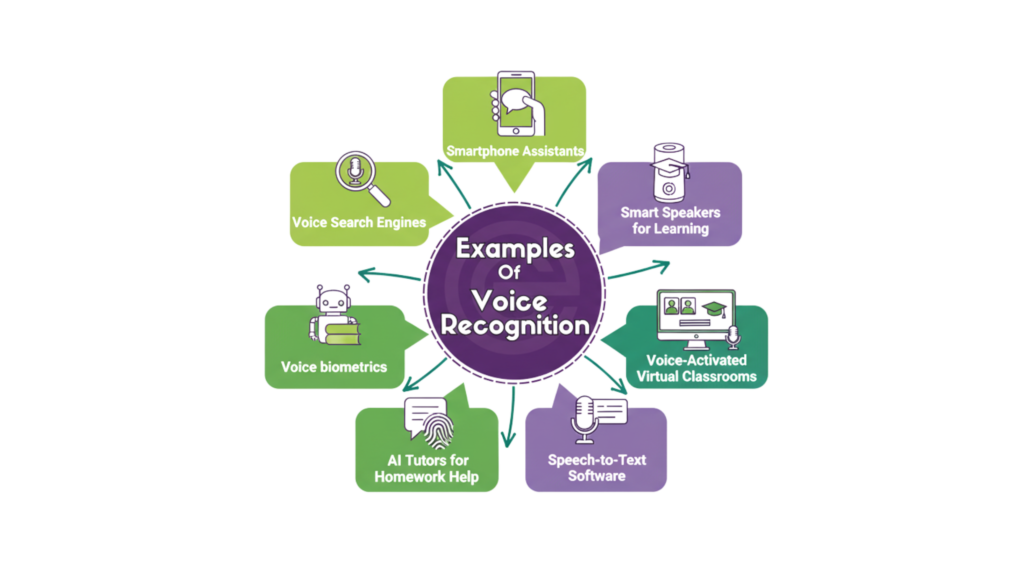
Voice search patterns change throughout the day. People use it most during rush hour, lunch breaks, and after normal business hours when they need urgent services like car repairs or medical care.
Your business needs to realize that optimizing for voice search isn’t optional anymore. It’s crucial to reach customers who depend on voice assistants to find local solutions.
Key Differences Between Voice And Text Search
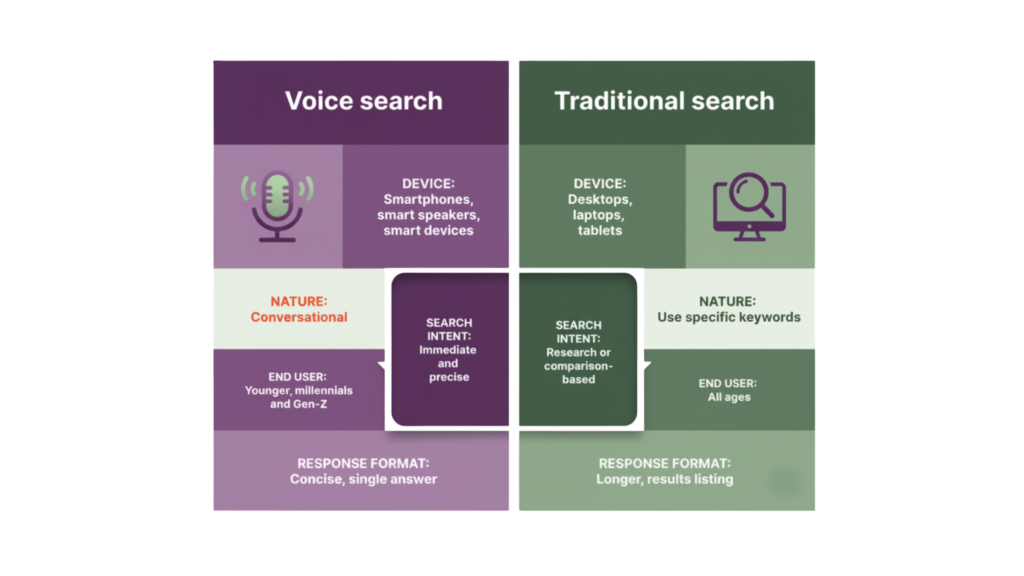
Your business needs to understand the fundamental differences between voice and text search to remain visible as search continues to evolve. These differences shape how you should plan your local SEO strategy and go well beyond just how people input their searches.
Conversational Tone And Natural Language
People use voice search the same way they talk to others. Your customers speak complete sentences to their devices instead of typing broken phrases. They don’t type “pizza restaurant” – they ask, “Where’s the best pizza near me?”
Natural Language Processing (NLP) makes this possible. It helps computers understand how humans speak and what they mean. NLP looks at the meaning of words and phrases rather than just matching keywords. Users can speak naturally without worrying about search engine rules, which makes voice search easier to use.
Longer And More Specific Queries
Voice searches run much longer than text searches. Research shows voice queries average about 29 words, while text searches use just 2-3 words. This happens because speaking comes more naturally than typing.
Questions dominate voice searches. About 10% of voice queries start with question words (who, what, when, where, why, how). Text searches use questions only 3.7% of the time. Here’s what this looks like:
- Text search: “best family lawyer”
- Voice search: “Who is the best family lawyer near me?”
These detailed queries tell us more about what customers want, so voice search better captures their true intent.
Higher Focus On Immediate Answers
Voice search users want quick, exact answers right away – not a list of links to check out. They often search while doing other things, so they need information they can use right then.

Users take action fast after voice searches. Many call businesses right after finding them through voice search. This shows how voice searches lead to real-life actions, not just information gathering.
Featured snippets play a vital role because voice assistants read these answers out loud. Your content has a better chance of being found in voice searches when it appears in these snippets. This represents a fundamental change in search strategy – you’re now trying to get position zero instead of just the top ten results.
These differences help you adapt your content and local SEO strategy for voice search users. Your business can stay easy to find, whichever way your potential customers choose to search.
How To Optimize For Voice Search In Local SEO
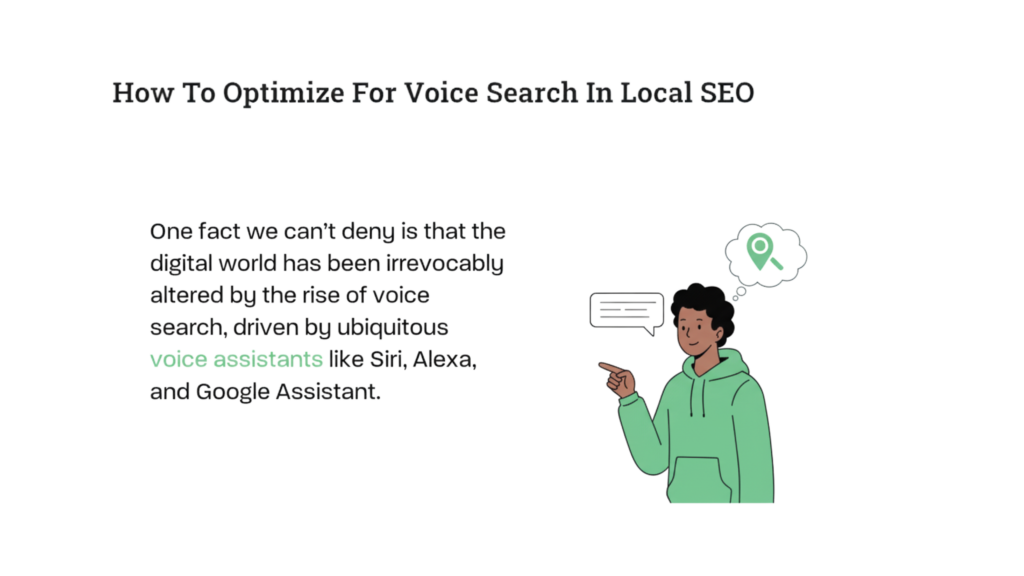
Voice search is changing how local businesses need to be found online. Nearly 60% of consumers aged 25 to 34 use voice search every day. Let’s look at how you can catch this valuable traffic.
- Use Long-Tail And Question-Based Keywords
People speak differently than they type. Your content should match the way people talk naturally. While typed searches are often short like “best pizza NYC”, voice searches come as full questions: “Where can I find the best pizza in New York City?”.
Questions starting with who, what, where, when, why, and how show up in almost 10% of voice searches. The best approach is to find common questions your customers ask about what you offer. Then create content that conversationally answers these questions.
- Create FAQ Pages With Natural Language
FAQ pages work great for voice search because they match how people ask questions. Research shows that people using voice search tend to ask complete questions, which makes FAQ sections perfect for catching this traffic.
Keep your FAQ content conversational and skip the technical jargon. Each answer should solve a specific customer’s need using everyday words. This makes your content more visible in voice search results and gives users clear answers they can understand.
- Ensure Mobile-Friendliness And Fast Load Times
Over half of all web traffic comes from mobile devices. Your site must work well on phones since that’s where most voice searches happen. Speed and responsive design aren’t optional anymore.

Users leave sites that take more than three seconds to load. You can speed up your site by making images smaller, reducing CSS and JavaScript, and using browser caching. Voice search users want quick answers and won’t stick around for slow pages.
- Add Schema Markup For Local Business Info
Schema markup helps search engines understand what your content means. Local businesses should use the LocalBusiness schema because it tells search engines important details about how you operate.
This data structure shows your business hours, location, and services – exactly what people ask for in voice searches. Adding the FAQ schema also helps you appear more prominently in voice results by organizing your Q&As clearly.
- Claim and Update Google Business Profile
Your Google Business Profile is crucial for local voice searches. About 58% of people use voice search to find local businesses, so your profile needs to be spot-on.
Keep your hours, address, phone number, and business category current. Get happy customers to write reviews – they make a big difference in “near me” searches. Local voice searches are growing fast, with “near me” queries growing 500% faster than regular searches.
Voice Search SEO Tips For Better Visibility
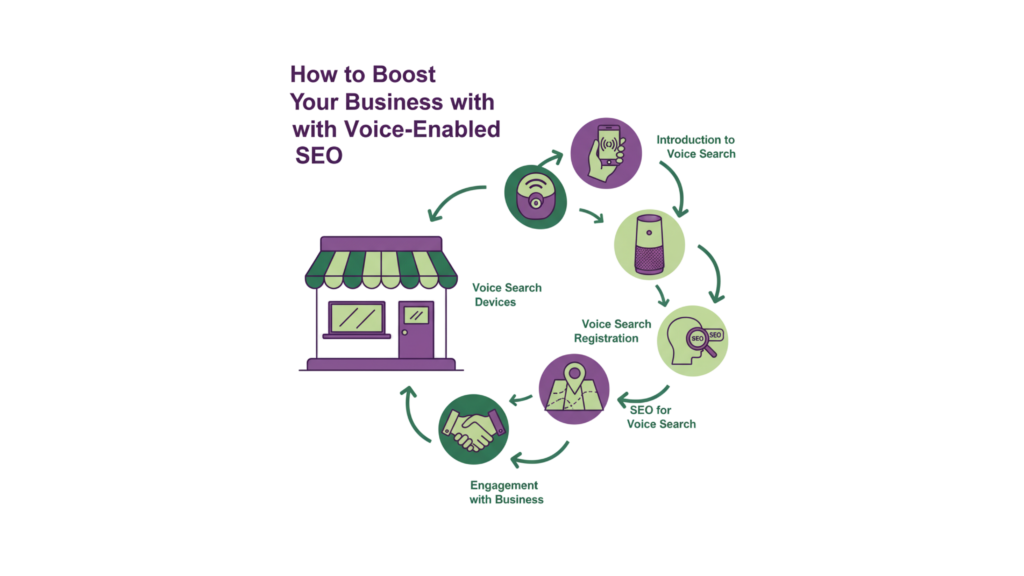
Simple optimization isn’t enough anymore. You can improve your business visibility with targeted voice search SEO techniques. These practical strategies will help you stand out as voice search transforms how people find local businesses.
Target ‘Near Me’ And Location-Based Phrases
Location-based searches are surging in popularity. “near me” searches growing 500% faster than standard mobile searches. About 58% of consumers use voice search to find local business information. Your website content should include location-specific phrases to reach this audience.
B2B services should focus on phrases like “best [service] in [city].” Your Google Business Profile needs accurate service area listings. Voice searches with local intent convert better, and 76% of smart speaker users perform local searches weekly.
Use Structured Data For Voice Assistants
Voice assistants need structured data to understand and retrieve specific details from your content. Schema markup is a vital part of voice search optimization because it provides context that voice assistants need.
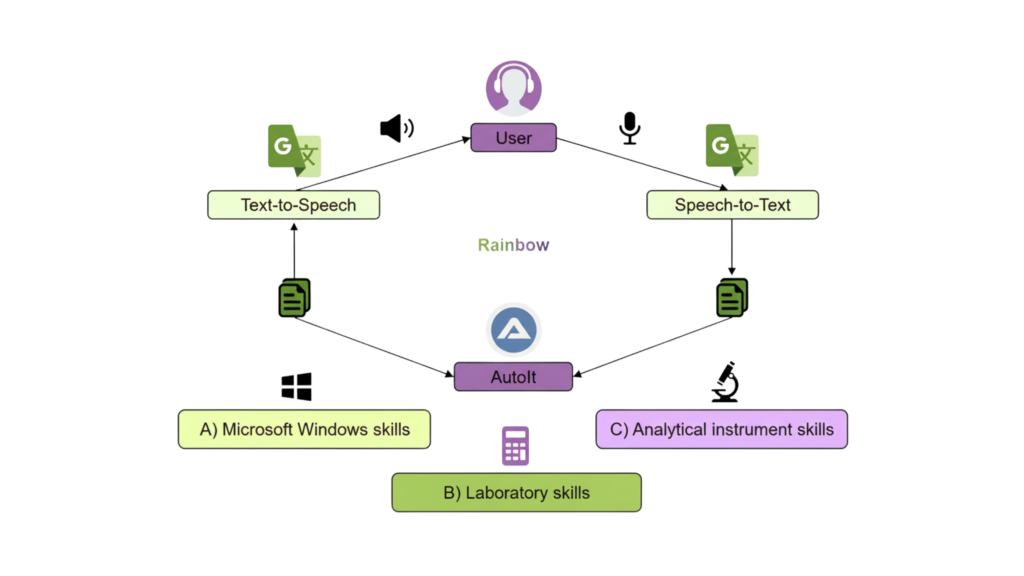
These schema types work best:
- LocalBusiness: Communicates location, hours, and services
- FAQPage: Perfect for answering conversational questions
- HowTo: Great for instructional content
Search engines use these markup types to classify your information correctly. This makes your content more likely to appear in voice search results.
Encourage And Manage Online Reviews
Voice assistants prefer businesses with positive reviews for recommendations. Reviews are a vital ranking factor for voice search. Search engines view a strong collection of high-quality reviews as a sign of credibility. This increases your chances of appearing prominently in voice search results.
The impact is clear – 28% of users call the business directly after getting voice search results. This shows why a positive online reputation matters.
Optimize for Featured Snippets
Featured snippets are the foundations of voice search—40.7% of voice search results come from these position-zero placements. Voice assistants read featured snippets word-for-word when answering queries.
You can capture these valuable placements by:
- Structuring content in question-and-answer format
- Keeping answers concise (30-40 words)
- Using clear formatting with bullet points and tables
- Implementing FAQ schema markup
Your content’s snippet-friendly structure increases the chances that voice assistants will choose your business as their primary information source.
Why Choose Rankfast For Voice Search Local SEO
Your local visibility depends on choosing the right partner for voice search optimization. Rankfast stands out as your ideal voice search local SEO partner for businesses aiming to capture voice-driven traffic.
Expertise in Local SEO and Voice Optimization
Rankfast’s team excels at optimizing voice search queries with local intent. This expertise makes a huge difference since 58% of consumers use voice search to find local business information. The team ensures your Google Business Profile stays complete and current, which boosts your chances of appearing in voice search results for local queries.
Custom Strategies Tailored To Your Business
Voice search optimization doesn’t follow a one-size-fits-all approach. Rankfast takes an all-encompassing approach by auditing your digital channels, spotting opportunities, and optimizing your SEO, product pages, and content.

Their tailored methodology recognizes each business’s unique needs and creates customized voice search marketing plans that match your specific market requirements.
Proven Results With B2B Clients Globally
Rankfast delivers results you can measure. Their business clients see noticeable improvements within 30 days. The team focuses on quick wins and long-term brand visibility instead of making you wait six months for results. This proven track record makes Rankfast a trusted partner for B2B companies looking for voice search local SEO solutions to reach the growing voice search audience.
Contact Rankfast’s SEO team or check out their local SEO services to optimize your business for voice search today.
FAQs
Q1. How is voice search changing local search behavior?
Voice search is significantly impacting local search behavior, with nearly 80% of voice queries having local intent. Users are now speaking in complete sentences, asking specific questions, and expecting immediate answers. This shift is driving businesses to adapt their SEO strategies to remain visible in voice search results.
Q2. What are the key differences between voice and text searches?
Voice searches tend to be longer, more conversational, and often in question format. They typically contain about 29 words on average, compared to 2-3 words for text searches. Voice queries also focus more on immediate answers and local information, with users expecting quick, actionable results.
Q3. How can businesses optimize for voice search in local SEO?
To optimize for voice search, businesses should use long-tail and question-based keywords, create FAQ pages with natural language, ensure mobile-friendliness and fast load times, add schema markup for local business information, and maintain an up-to-date Google Business Profile.
Q4. Why are “near me” searches important for voice search optimization?
“Near me” searches are crucial because they’re growing 500% faster than standard mobile searches. About 58% of consumers use voice search to find local business information. Incorporating location-specific phrases and optimizing for these searches can significantly improve a business’s visibility in voice search results.
Q5. How does voice search impact business visibility and customer engagement?
Voice search greatly influences business visibility, especially for local searches. After receiving voice search results, 28% of users directly call the business they found. This high conversion rate emphasizes the importance of optimizing for voice search to capture this valuable traffic and increase customer engagement.
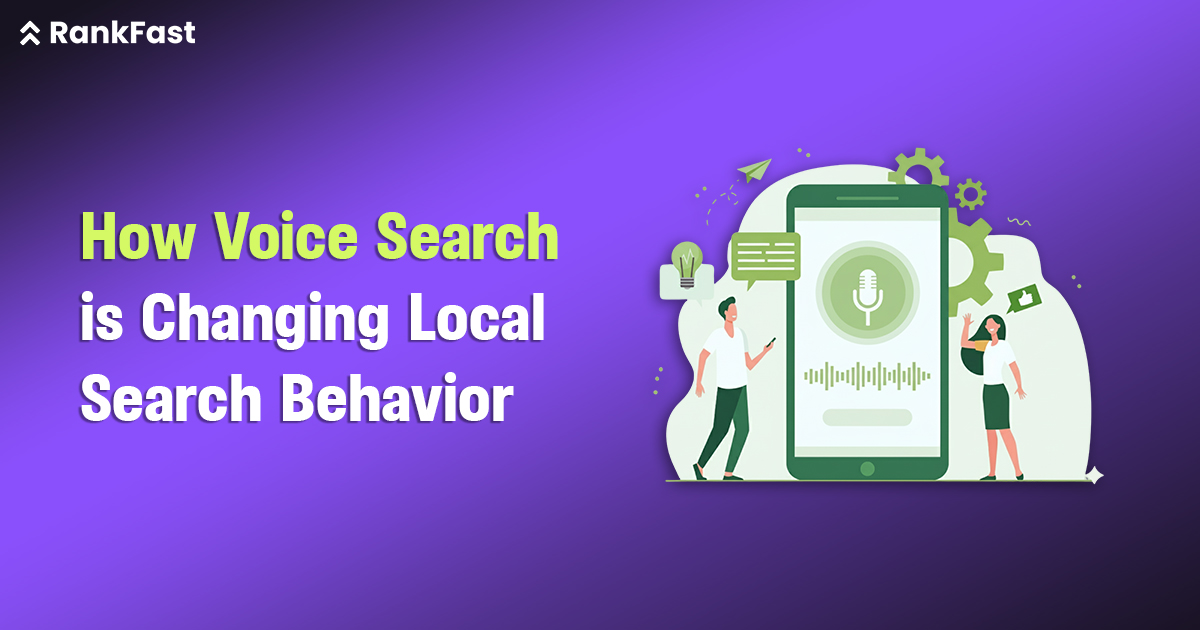
Leave a Reply